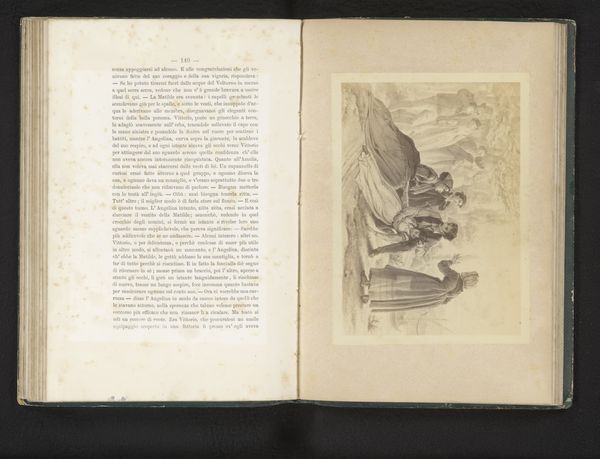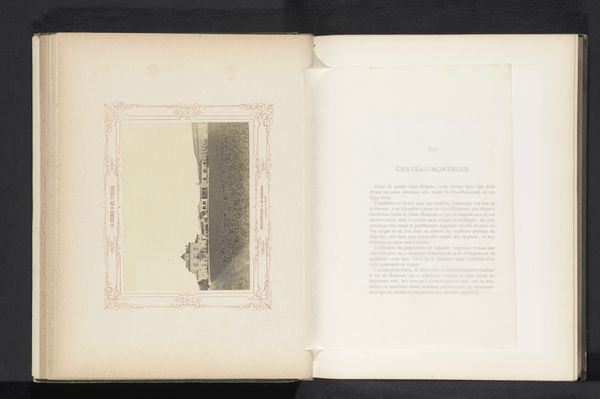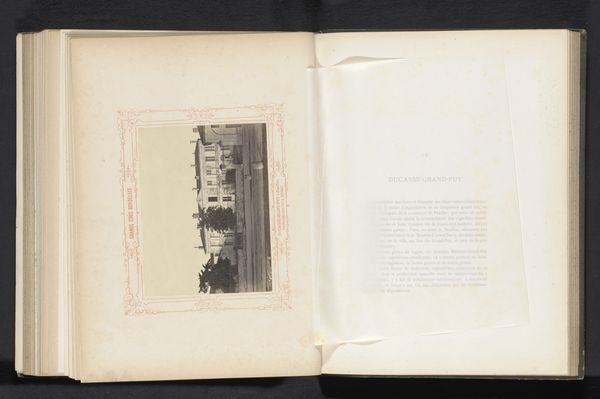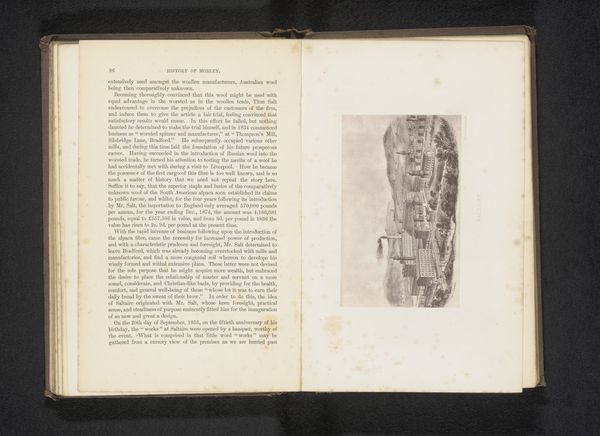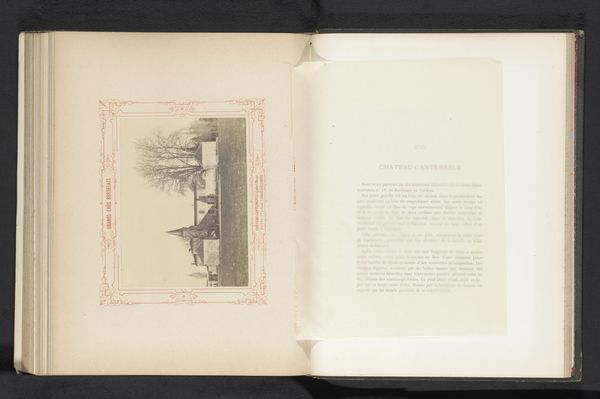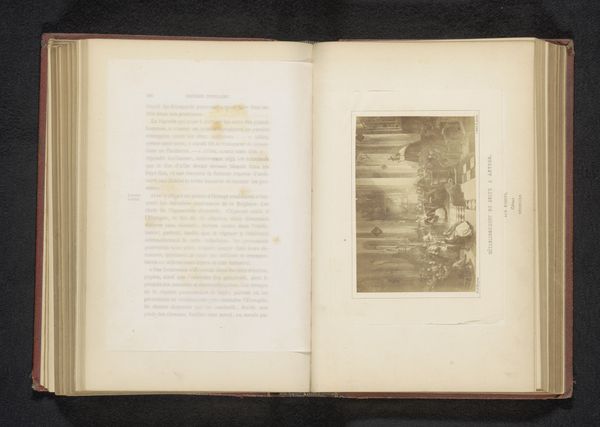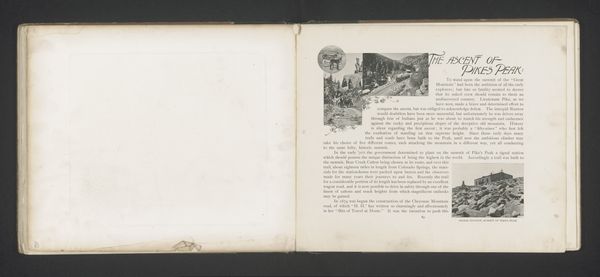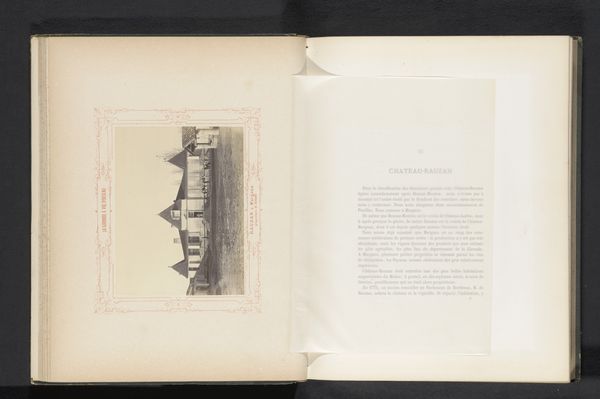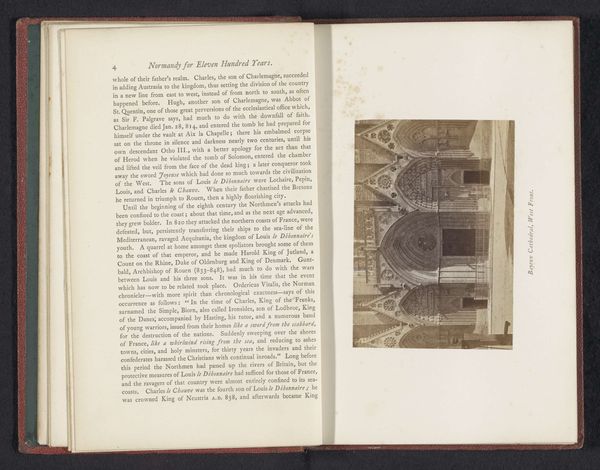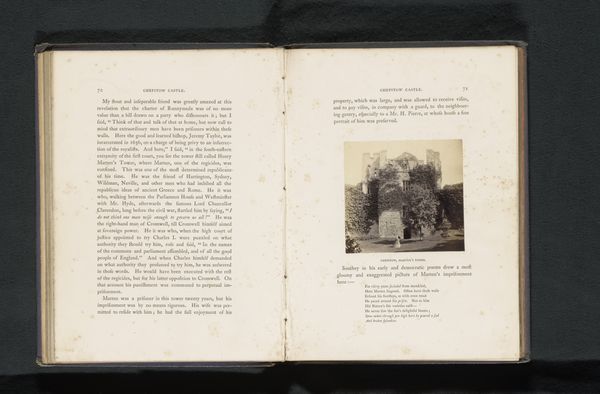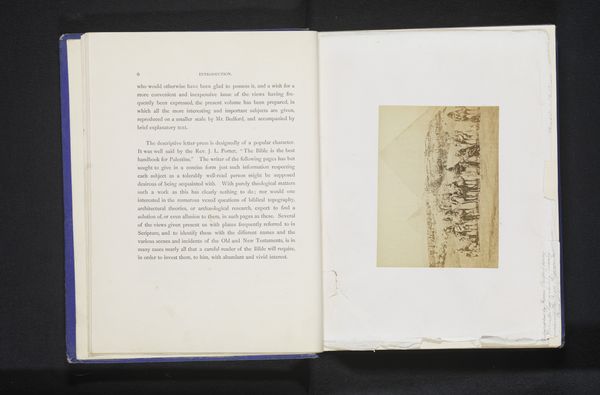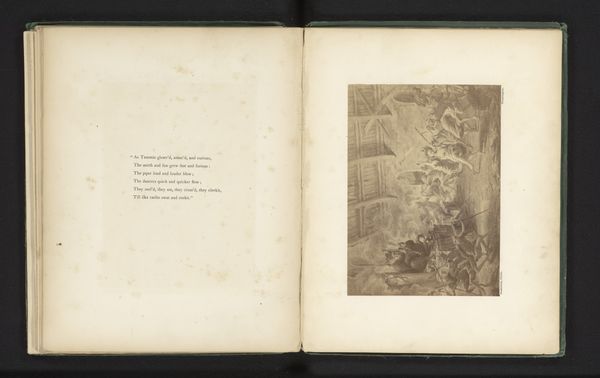
Fotoreproductie van een tekening van een huiskamertafereel door Guglielmo Stella before 1867
0:00
0:00
drawing, print
#
drawing
# print
#
genre-painting
#
academic-art
Dimensions: height 129 mm, width 178 mm
Copyright: Rijks Museum: Open Domain
Curator: This image, “Fotoreproductie van een tekening van een huiskamertafereel door Guglielmo Stella,” made before 1867, offers us a peek into a bourgeois domestic scene through the lens of reproduction. What strikes me is how the very act of making a drawing, its inherent labor, is captured here. Editor: It feels quite intimate, like we're peering into a private moment. The drawing itself, and then the photographic reproduction... it makes me wonder about the purpose of reproducing it this way. What do you see in this print? Curator: Precisely. Let's think about the materials and their purpose. We have a drawing, which then becomes a print, widely disseminated. What's being consumed here? Is it merely the image, or is it the aura of domesticity and learnedness that Stella's crafted? Is this reproduction meant to elevate the subject or simply make it accessible to a wider, perhaps less affluent, audience? Consider also that this type of subject matter can be tied to commercializing “good taste” as an element of social capital and ascension, even branding. How are we meant to consume this idealized image of domestic life? Editor: That's a fascinating point! I hadn’t considered how the mass production changes its function like that, beyond the visual aspect. Is the skill of the drawing relevant in the grand scheme of things, considering its place in an aesthetic industry? Curator: Absolutely. It raises questions about value – is it Stella's artistic skill, now multiplied, or the perceived social value represented that the market consumes? By analyzing the materials and their modes of dissemination, we're not just looking at a drawing but engaging in a critique of its place within the broader landscape of 19th-century bourgeois society and commodity culture. Editor: That’s helped me consider a reproduction very differently. I had originally considered the content but, looking into materiality, it makes more sense to consider its cultural consumption.
Comments
No comments
Be the first to comment and join the conversation on the ultimate creative platform.
